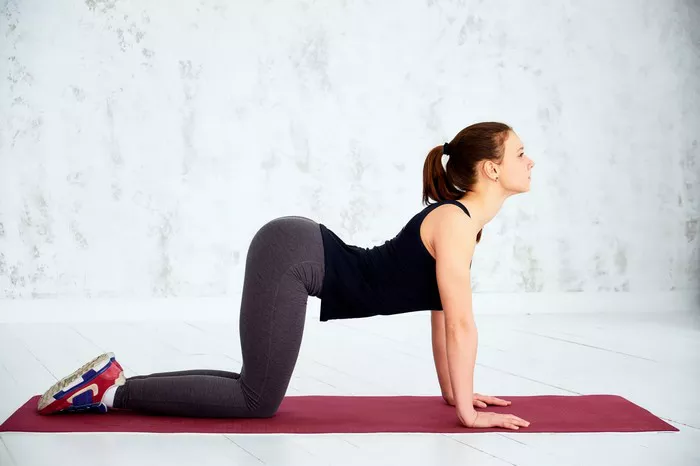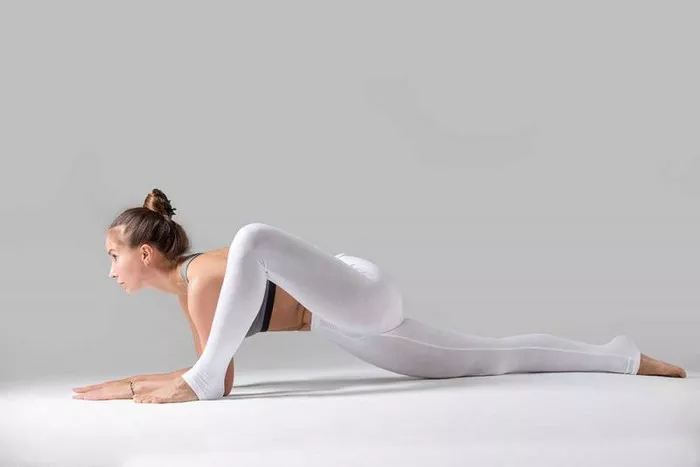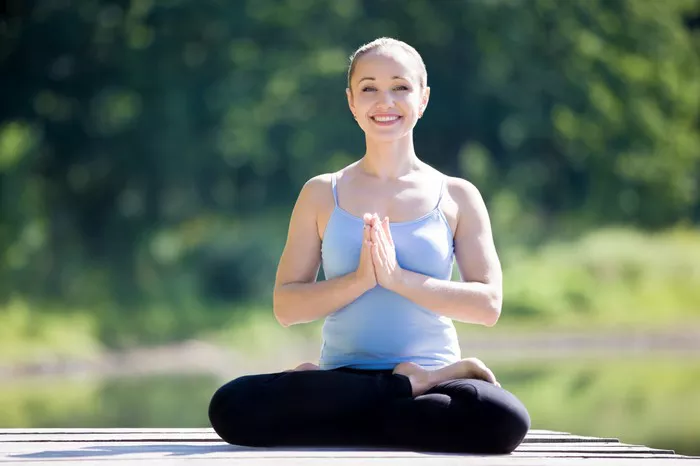Yoga, an ancient practice originating from India, encompasses a diverse range of poses (asanas) that promote physical, mental, and spiritual well-being. Among these poses is the Cow Pose (Bitilasana), which holds significant symbolism and offers numerous benefits to practitioners. In this article, we delve into the origins and symbolism of the Cow Pose, its physical and mental benefits, variations and modifications, step-by-step instructions, as well as precautions and contraindications.
Origins and Symbolism
The Cow Pose has its roots in Hatha Yoga, a branch of yoga that focuses on physical postures to balance mind and body. In Sanskrit, “Bitil” means cow, hence the name Bitilasana. This pose is often paired with Cat Pose (Marjaryasana), forming a gentle flowing sequence known as Cat-Cow Stretch.
Symbolically, the Cow Pose represents grace, nurturing, and fertility. Just like a contented cow grazing in the pasture, this pose encourages a sense of groundedness and tranquility. By arching the back and lifting the heart, practitioners can tap into the nurturing energy associated with the maternal aspect of cows in Hindu mythology.
Physical and Mental Benefits
The Cow Pose offers a plethora of physical and mental benefits, making it a staple in many yoga routines. Some of the key advantages include:
1. Spinal Flexibility: Bitilasana gently stretches the spine, promoting flexibility and mobility. It helps alleviate stiffness in the back and improves posture by encouraging proper alignment.
2. Stress Relief: Engaging in the rhythmic movement of Cow Pose can induce a sense of calmness and relaxation. The controlled breathing combined with mindful movement helps reduce stress and anxiety.
3. Stimulates Digestion: The gentle compression and release of the abdomen in Cow Pose stimulate the digestive organs, promoting healthy digestion and relieving bloating or gas.
4. Strengthens Core Muscles: While performing Bitilasana, the abdominal muscles engage to support the spine, thus strengthening the core muscles over time.
5. Improves Circulation: As the spine is gently stretched and the chest expands in Cow Pose, circulation is enhanced, delivering oxygenated blood to various parts of the body and promoting overall vitality.
6. Elevates Mood: The uplifting nature of the Cow Pose can have a positive impact on mood and emotional well-being. The gentle backbend opens the heart center, fostering feelings of joy and compassion.
Variations and Modifications
Yoga is inherently adaptable, and practitioners can modify poses to suit their individual needs and abilities. Here are some variations and modifications of the Cow Pose:
1. Extended Cow Pose: In this variation, instead of stopping at a neutral spine, practitioners can deepen the backbend by extending the arms forward while maintaining the arch in the back.
2. One-Legged Cow Pose: To intensify the stretch, practitioners can lift one leg behind them while performing Bitilasana. This variation enhances balance and strengthens the muscles of the standing leg.
3. Supported Cow Pose: For individuals with limited mobility or wrist issues, placing blocks under the hands can provide additional support and alleviate strain on the wrists.
4. Seated Cow Pose: This modification is suitable for those who find it challenging to perform the pose on all fours. Practitioners can sit on a chair or the floor with legs extended and perform the spinal arching movement from a seated position.
5. Dynamic Cow Pose: Instead of holding the pose statically, practitioners can incorporate dynamic movements, such as flowing between Cow Pose and Cat Pose in a synchronized manner, to increase flexibility and fluidity in the spine.
Step-by-Step Instructions
Follow these step-by-step instructions to practice the Cow Pose safely and effectively:
1. Starting Position: Begin on your hands and knees in a tabletop position, with wrists directly under shoulders and knees under hips. Ensure that your spine is in a neutral position.
2. Inhale: As you inhale, gently arch your back and lift your chest toward the ceiling, allowing your belly to sink toward the floor. This is the Cow Pose.
3. Exhale: On the exhale, round your spine upward, tucking your chin toward your chest and drawing your belly button toward your spine. This is the Cat Pose.
4. Repeat: Continue flowing between Cow Pose and Cat Pose, synchronizing your movements with your breath. Take slow, deep breaths, allowing each inhale to lift you into Cow Pose and each exhale to guide you into Cat Pose.
5. Duration: Hold each pose for 5-10 breaths or as long as feels comfortable, gradually increasing the duration as your flexibility improves.
6. Exit: To release, return to a neutral tabletop position, then sit back on your heels or come to a comfortable seated position.
Precautions and Contraindications
While the Cow Pose offers numerous benefits, it’s essential to practice with mindfulness and respect for your body’s limitations. Here are some precautions and contraindications to consider:
1. Back Injuries: Individuals with chronic back pain or injuries should approach Cow Pose with caution and may need to modify the pose or avoid it altogether. Consult with a healthcare professional or experienced yoga instructor for guidance.
2. Wrist Issues: If you experience discomfort in your wrists during the pose, try using props like yoga blocks for support or opt for alternative wrist-friendly variations.
3. Pregnancy: Pregnant individuals should practice Cow Pose with care, avoiding deep backbends that compress the abdomen. Instead, focus on gentle movements that support the spine and promote relaxation.
4. Neck Injuries: Avoid straining the neck by keeping it aligned with the spine during the pose. If you have a neck injury or discomfort, avoid excessive neck movement and focus on the spinal arching action.
5. High Blood Pressure: Individuals with high blood pressure should approach backbends cautiously, as they can temporarily increase blood pressure. Practice Cow Pose mindfully, avoiding excessive strain and focusing on steady breathing.
6. Recent Abdominal Surgery: If you’ve undergone recent abdominal surgery or have abdominal hernias, consult with a healthcare professional before attempting Cow Pose to ensure it’s safe for your condition.
Conclusion
In conclusion, the Cow Pose is a versatile yoga asana that offers a multitude of benefits for both the body and mind. By understanding its origins, embracing its symbolism, and practicing with mindfulness and awareness, practitioners can experience the transformative power of this gentle backbend. Whether performed in its traditional form or modified to suit individual needs, Bitilasana serves as a reminder of the nurturing and grounding qualities embodied by the cow, fostering a deeper connection to oneself and the world around us. As with any yoga practice, listening to your body and honoring its limitations is paramount to a safe and fulfilling experience.
FAQs:
How can I improve my cow pose?
To improve your Cow Pose, focus on gradually increasing spinal flexibility and awareness of alignment. Start by practicing Cat-Cow stretches regularly to warm up the spine and build strength in the back muscles. Pay attention to your breath and try to synchronize it with the movement, inhaling as you arch into Cow Pose and exhaling as you round into Cat Pose. Additionally, incorporate complementary exercises such as gentle backbends and chest-opening stretches to enhance flexibility in the upper body. Consistent practice, proper alignment, and mindful breathing will help you deepen your Cow Pose over time.
Who should avoid Gomukhasana?
Individuals with shoulder injuries or limited range of motion in the shoulders should avoid Gomukhasana (Cow Face Pose) or practice it with caution and modifications. This pose requires significant external rotation of the shoulders, which may exacerbate existing shoulder issues or cause discomfort. Pregnant individuals in advanced stages of pregnancy may also find Gomukhasana challenging due to the pressure it places on the abdomen. If you have any concerns or medical conditions, consult with a qualified yoga instructor or healthcare professional before attempting Gomukhasana.
What are the disadvantages of Gomukhasana?
While Gomukhasana offers various benefits, including improved shoulder flexibility and posture, there are some potential disadvantages to consider. This pose can be challenging for individuals with tight shoulders or limited range of motion, leading to strain or discomfort if not practiced mindfully. Additionally, Gomukhasana may put pressure on the knees and hips, especially if the hips are tight or if there is asymmetry between the two sides of the body. Practitioners with knee or hip issues should approach Gomukhasana with caution and use props or modifications to support their practice. As with any yoga pose, listening to your body and practicing with awareness are essential to prevent injury and reap the full benefits of the pose.
























